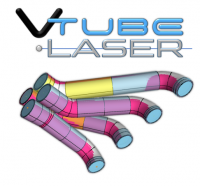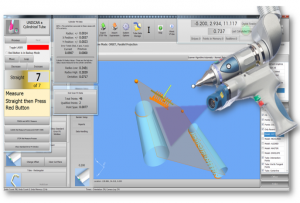VTube-LASER Training Agenda
|
Contents |
About the Training Agenda
|
Training agendas for VTube-LASER usually follow the pattern shown below. |
Number of Trainees and Types of Trainees
|
The number of trainees in the training depends on the role each trainee is assigned. Hands-on Trainees: 3 maximumHands-on trainees handle the computer and arm. n the steps we show below, many of the actions are hands-on practice. If we have 3 trainees, then the step will require 3 iterations. If we have 5 trainees, then the step will require 5 iterations. Having too many students in the hands-on training may limit how much information we can give. The fewer the number of hands-on trainees, the faster training goes. Observer Trainees: 3 maximumIf you limit some of the trainees to observers, then the training will move more quickly, and we will be able to teach more information. Appropriate EquipmentLarge MonitorsAlso, it is important to know that larger monitors are necessary for training larger numbers of trainees - whether they are hands-on or observers. For example, 6 total trainees cannot easily see a laptop monitor at the same time. It is very important to have a large monitor for a class with that many trainees. (Large = 27" or larger). Amplified SoundPlease be sure that have amplified sound for this system so that everyone can hear the sound feedback. |
Typical Training Agenda
Day 1
| STEP | INSTALLATION / TRAINING TASK |
| 1 |
Arm installation and setup |
|
2 |
Bender integration assistance |
|
3 |
Probe and scanner calibration |
|
4 |
Setup a program from solid model |
|
5 |
How to setup a program from a print |
|
6 |
Arm connection and scanner setup |
|
7 |
Measuring Cut Planes (measuring the table surface) |
|
8 |
General measuring setup (set your default tolerances into VTube-LASER) |
|
9 |
How to measuring the tube/pipe |
|
10 |
Understanding the inspection results to qualify the tube shape |
|
11 |
Using BENDER SETUP to connect to benders for setup and correction |
|
12 |
How to view reports |
|
13 |
How to reverse-engineer a tube |
|
14 |
Address any unique application needs |
|
15 |
Hands-on practice for students |
Day 2
| STEP | INSTALLATION / TRAINING TASK |
| 1 |
Review what we learned on day 1 - quiz the trainees |
|
2 |
Practice full corrections loops with actual customer parts |
|
3 |
Review special application needs |
Other Pages
- Back to VTube-LASER

